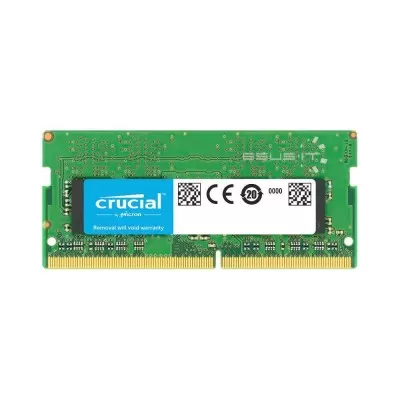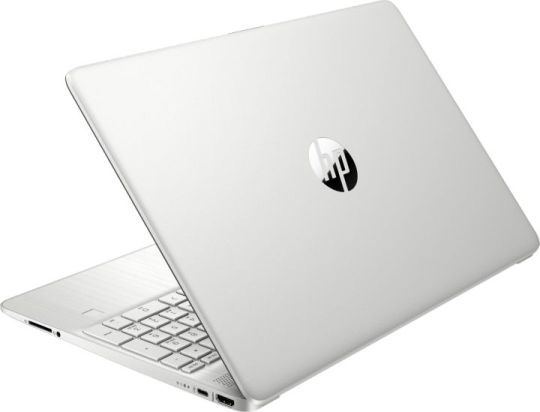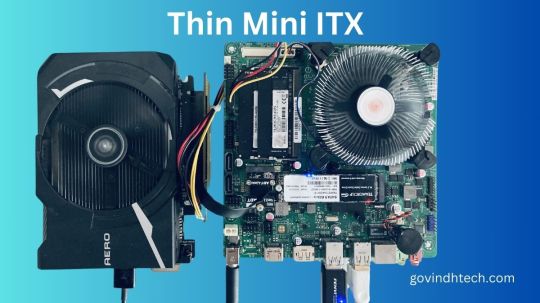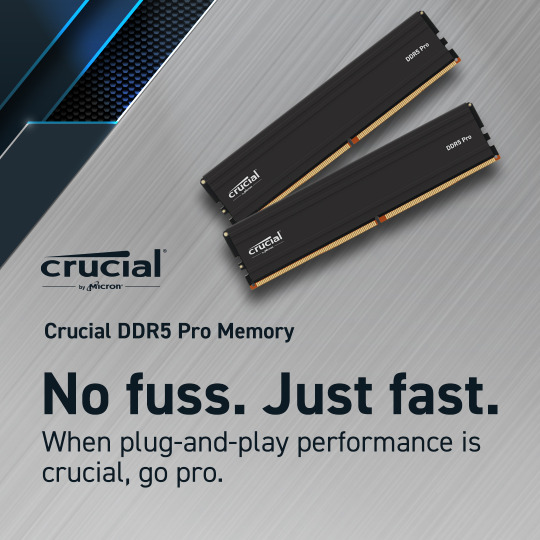#SODIMM
Text
Kingston FURY Impact DDR5 Memory Specifications

Kingston’s FURY Impact DDR5 memory technology is now available for your notebook or small form-factor machine, allowing you to experience the most recent and progressive memory technology. Featuring Intel XMP 3.0 Certified SODIMM kit capacities of up to 64GB, Kingston FURY Impact DDR5 incorporates all of the enhanced features of DDR5 into a form factor that is both slim and compact.
When installed on modules that are compatible with Plug N Play, Kingston FURY Impact DDR5 will automatically overclock, providing your system with an increase in performance without requiring you to enable a profile. By selecting the profile in the BIOS settings, modules that feature XMP 3.0 profiles have the ability to overclock to the highest frequency that has been published, which can reach up to 6400MT/s.
Key Attributes
Extremely powerful DDR5 SODIMM performance
Plug-and-play functionality that allows for automatic overclocking
XMP 3.0 Certification from Intel
Power consumption that is low while efficiency is increased
Enhanced stability through the use of on-die ECC
Featured Elements
Extremely powerful DDR5 SODIMM performance
Compared to DDR4, DDR5 has a starting speed of 4800MT/s, which is fifty percent faster. This results in an increase in gaming, rendering, and multitasking.
Plug-and-play functionality that allows for automatic overclocking
The PnP modules of Kingston FURY Impact DDR5 are designed to automatically overclock to the highest speed that is listed.
XMP 3.0 Certification from Intel
Increase the performance of your memory by using advanced timings, speed, and voltage that have been pre-optimized for overclocking.
Power consumption that is low while efficiency is increased
Keeping your system cool and running efficiently is made possible by the low power draw of Kingston FURY Impact DDR5.
Enhanced stability through the use of on-die ECC
Uphold the integrity of the data while simultaneously reaching overclocking speeds.
Read more on Govindhtech.com
0 notes
Video
youtube
Zastanawiasz się nad sensem dokładania większej ilości pamięci RAM do Twojego laptopa? Ten materiał wyjaśni wszystko to, co należy wiedzieć. Dowiesz się jak sprawdzić ile pamięci RAM potrzebujesz przy TWOIM stylu korzystania z komputera. Dowiesz się, czy jest sens iść w Dual Channel oraz, czy opłaca się dokładać do Dual RANK.
0 notes
Text
CT16G4SFD8266 Crucial 16GB PC4-21300 DDR4 SoDimm Memory Review
CT16G4SFD8266 Crucial 16GB PC4-21300 DDR4 SoDimm Memory Review
Improve Your Laptop’s Performance
If your computer has slowed down and takes longer to load applications, it may need a memory upgrade. Crucial CT16G4SFD8266 is explicitly designed to enhance the system’s functionality and accommodate faster and smoother performance. This laptop memory allows the system to perform multiple tasks simultaneously, whether you’re editing documents, pictures, and…

View On WordPress
0 notes
Text
using a 2GB DDR3 SODIMM as a toothpick because i couldn't find any, well, toothpicks
2 notes
·
View notes
Text
agony
I bought a 32gb upgrade kit of ram. 16x2, my task manager claims i have 2 of 2 slots full so id go from 16 gb to 32 with this upgrade..... then I open it and see only one sodimm slot. The stick in it is onlhy 8gb. The other 8gb are soldered to the board
1 note
·
View note
Note
can you build a pc for me? i'd like a list of parts and prices, thank you very much!!
Sure, here's the parts list I used for my current PC, which I've been using for about a year now.
Note that I was not a computer engineer at the time, I just built my PC by doing some online research and making some educated guesses based on what I knew at the time. It was all a bit approximate, so keep that in mind. I was also really bad at some things, like assembling my PC, installing Windows, etc.
AMD Ryzen 7 9 3900X, 4c/8t 3.70GHz; 2x 32GB DDR4-3200 SODIMM (OC) 2408MHz; 512GB PCIe NVMe M.2 SSD; 1TB 7200RPM HDD; 128GB DDR4-4133 SODIMM; GTX 1660Ti 4GB; Corsair MPC-E RX 480 DDR4-3850 MHz; Intel Celeron 3735U; Gigabyte EXO-RA120M v6; Samsung 960 Pro NVMe (OC); 128GB DDR4-2400 SODIMM; LG ENVY W2419S/T OLED 24″ 4K TV
This is the parts I used for this build. I may have slightly tweaked it when building the next PC, but that's only going to change the case and a couple of processors, for the most part.
Intel Pentium Anniversary Edition CPU; Intel Core i7-10800G7; Intel Z390 Pro WIFI-AC 7260; Intel Z390 Express; Nvidia RTX 2060 Gaming; 16GB RAM; Corsair Vengeance LPX LPX 2133MHz; Samsung 970 Evo Plus M.2 NVMe (OC); AMD Ryzen R9 X5950 PRO 4c/8t 4.4GHz; Samsung 256GB NVMe (OC); Samsung 960 Evo Plus M.2 NVMe (OC); Samsung 860 Evo Plus M.2 NVMe (OC) DDR4-3700 (OEM); Corsair Vengeance LPX LPX DDR4-2933MHz; ASUS Maximus VIII Hero Intel Iris Plus Graphics; Intel X370 Professional; Samsung QX2 NVMe 1TB SATA SSD; Intel X530 Quad Core (OC); Samsung 1TB M.2 NVMe (OC) DDR4-3200MHz
This is the last build I did, but I didn't really mess around with that one, and I'm not going to be changing it now either. It was basically the same as my other PC, with some changes to the processor and graphics card to accommodate the new motherboard design. This motherboard doesn't have the same kind of dedicated cooling setup the others do, but I didn't really like having it open, so I think this is how I want to continue with these systems.
Intel Pentium Anniversary Edition CPU; Intel Extreme Edition 100-Series Intel X540; Intel 10th Gen Whiskey Lake Refresh Processors; Intel QCLK Max Performance Platform; Intel X570 PCH; Samsung P1 NVMe (OEM); Samsung P2 NVMe (OEM); Intel X710; Intel Z390 Chipset; Intel H330; Samsung 960 P-Plus; Samsung M.2 (P) (OEM); Samsung M.2 (PL) (OEM); Samsung QX1 NVMe 1TB NVMe M.2 SSD; Intel QX11 NVMe 1TB SSD; Intel P3700 NVMe 1TB NVMe M.2 (OEM); Samsung P1 NVMe 512GB SSD; Samsung P2 NVMe 1TB SSD; Samsung P3 NVMe NVMe 2TB SSD; Samsung M.2 QX1 NVMe 512GB; Samsung 960 M.2 512GB (P1); Samsung 960 Pro M.2 (512GB; 512GB); Samsung 960 EVO M.2 (512GB; QX1); Samsung 960 PRO M.2 512GB; Samsung 960 PRO M.2 (QX1); Samsung 960P M.2 (512GB); Samsung 960P M.2 512GB (P1); Samsung 960 PRO M.2 1TB (P1); Samsung 960 PRO M.2 QX1 (512GB) (OEM); Samsung 960 PRO M.2 512GB (OEM); Samsung 960 P M.2 512GB (OEM); Samsung M.2 P3 EVO Plus NVMe; Samsung M.2 P2 EVO Plus NVMe; Intel X570 Express; Intel X710; Intel Z530; Intel H270; Intel H370; Intel X99; Intel X299; Intel Z390 Express; Intel Z390 Pro WIFI AC 7260; Intel B250; Intel X570 AFR; Intel Z390 ATX; Intel X550; Intel X5; Intel B45; Intel B55; Intel D1500; Intel Z390; Intel D1546; Intel K1100; Intel B85; Intel B85; Intel QX520; Intel QX32; Intel H360; Intel H370 Express; Intel Z390 (P2/C101); Intel Z530; Intel Z560; Intel Z570; Intel Z575; Intel Z530; Intel Z620; Intel Z640; Intel Z660; Intel Z640; Intel Z740; Intel Z740; Intel LGA 1166
I'm not exactly sure how many of these were actually "used" – like I said, I wasn't really using my old PC for anything, so it was kind of like "ok I guess that'll be the new PC" – but I think these are all the actual parts?
Also if I had known how much space I'd need for the new PC sooner, I would have ordered the SSD's and HDDs in larger sizes. I had planned to get a 1TB SSD for the OS and OS updates + large files (music, etc.), and I went with a 1TB SSD for everything else (including games), since I was worried I might not be able to fit everything on my current drive. I'm not sure if there are performance differences between 1TB vs 2TB drives, and I'm not sure if that will really be an issue for me for now given the relatively small size of my OS and data files.
5 notes
·
View notes
Text
EXCESS ZBOOK FURY G9 i9 64G 1T
EXCESS ITEM – BRAND-NEW (BROWN-BOX) – HP ZBook Fury G9 Mobile Workstation (NON-TOUCH), Windows 11 Pro 64-Bit (with Windows 10 Pro 64-Bit Downgrade), Intel Core i9-12950HX 16-Core Processor 3.60GHz, 64GB (2X32GB) 4800MHz DDR5 SODIMM, NVIDIA Quadro RTX A5500 16GB Dedicated Memory, 1TB M.2 PCIe NVMe 2280 TLC 4X4 SSD, Finish: Natural Silver, 5MP IR Camera, NO OPTICAL DRIVE, 16.0-inch WUXGA WLED UWVA…

View On WordPress
0 notes
Text
Latest electronics news
Latest electronics news
Supermicro's new Next-Gen EdgeMax Redefines IoT Performance
Supermicro,Inc a provider of Total IT Solution,Launches a new generation of IoT and embedded systems aimed at bolstering performance and efficiency for applications at the remote edge.With a focus on accelerating IoT and edge AI workloads,Supermicro intrduces cutting -edge embedded solutions powered by the latest Intel Atom x7000RE processor.
Charles Liang,President,and CEO of Supermicro,emphasizes the company's commitment to expanding its system product line to meet the evolving demands of edge computing.The new generation of upermicro systems is optimized for edge applications,catering to the growing need for high-performance computing in data-intensive environments.
The new Supermicro systems,including the SYS-E100,SYS-E102,SYS-E111AD and updated SYS-E403,are designed to deliver increased performance and power efficiency.These leverage the latest Intel Atom and Intel Core CPUs,offering enhanced capabilities in compact form factors suitable for edge deployments.
The SYS-E100-14AM feature the Intel Atom x7000RE processors with up to 8 cores,doubling the processing power of their predecessors.Both system offer up to 16GB of DDR5-SODIMM,dual 2.5 GbE LAN ports,HDMI ports,USB 3.2 ports,and a M.2 B/E.M-key with a NANO SIM card slot,catering to diverse edge computing requirements.
Furthermore,the SYS-E100 and SYS-E102 servers come in ultra-compact form factors,with the SYS-E100 offering fanless operation and an extended temperature range of 20 degree C to up to 70 degree C.
For More Info Visit This Page
https://electronicsclap.com/
0 notes
Text
Crucial 4GB DDR4 2400 Mhz Ram Lifetime Warranty
Specification:
▪️ Technology – DDR4
▪️ Speed – DDR4-2400
▪️ PC speed – PC4-19200
▪️ Density – 4GB
▪️ Module type – SODIMM
▪️ DIMM type – Unbuffered
▪️ CAS latency – 17
▪️ Extended timings – 17-17-17
▪️ Voltage – 1.2V
▪️ Kit Qty – 1
▪️ Warranty – Limited Lifetime
Key Features
▶️ Make everything on your computer faster
▶️ Multitask with ease
▶️ Easy to install
▶️ Maximize the value of your system

View On WordPress
0 notes
Text
HP 15DY2795 I5 1135G7 8 256 15.6FHD
HP Laptop 15-dy2795wm
Intel® Core™ i5-1135G7 Processor
256GB Solid State Drive
8GB SODIMM DDR4 SDRAM
No Optical Drive
Windows 11
15.6″ FHD LED Display (250 nits)
3-cell, 41 Wh
1 year international warranty

View On WordPress
0 notes
Text
32GB Mini-ITX Laptop Performance, portability Experiment

Mini ITX Motherboard
The Mini-ITX board became a laptop with 32GB of RAM and a battery. Because it’s passively cooled, the Mini-ITX laptop has no fan noise. SFF lets you turn a Mini-ITX motherboard into a laptop. Due of its passive cooling, Fanless Tech brought APU-enthusiast’s completed construction project to our attention. Passive cooling uses a heatsink and natural air dissipation, therefore considerable breathing area is recommended.
The construction specs are minimal yet usable for basic computing and light gaming/emulation. A 1TB Muskhin pilot-e NVMe Gen 3 drive is linked to ASRock’s N100DC-ITX board and 32 GB of 3200 MT/s Mushkin Essentials DDR4 RAM.
The Intel N100, included inside the ASRock N100DC-ITX motherboard, has 4 cores and 4 threads of Alder Lake architecture. It uses the Intel UHD graphics engine, which limits it compared to modern Intel iGPUs.
Despite those limitations, it’s astonishing to run all of this on a battery in a bespoke chassis that turns it into a dual-screen laptop. It can simulate Nintendo 3DS games, so is it that bad? Ayaneo Flip DS can replicate Switch in a smaller form factor, but individuals develop these projects for fun, not practicality.
Besides being a working Mini-ITX laptop, the two screens are creative. As shown in the images above and the original gallery, the bottom screen can be utilised as a touchscreen keyboard or to improve emulation/media consumption. Since the design is being demoed with 3DS emulation, the dual-screen option may have been influenced by that workload.
This project achieves all it sets out to, making it hard to criticise. It looks almost clean enough to be a consumer laptop (in a retro-futuristic 90s style), but it won’t perform like a high-end gaming laptop.
Successful projects like this make us wonder how fast a “proper” Mini-ITX laptop project may be with active cooling and newer board/CPU combos like ASRock’s Core i9-capable MITX board. The Mini-ITX laptop proof of concept is here, but such designs may require large external power bricks! Another SFF. Network man used “Thin ITX” too.
A mostly handworked laptop prototype with a thin mini-ITX (hence “thin ITX“) motherboard using a 17.3” display and Li-ion battery.
Since laptops have proprietary motherboards that can’t be replaced, upgrading to current-generation technology usually requires buying a new laptop. You’d also need to alter the keyboard and other parts of a normal laptop.
Framework’s answer is their own motherboard specification, which they hope to support in the future and combines well with their other components for a sleek system.
This is the lightest motherboard standard that supports powerful, socketed hardware and is supported by companies who deliver boards for new chipsets quickly.
Here’s a good introduction to thin ITX, along with forum postings. Intel designated it in 2011 for DIY AIOs. That didn’t take off, but it’s still popular, but it’s aimed at industrial users for embedded applications, making it hard for private persons like me to buy. However, various qualities make it acceptable for this purpose.
Advantages
Half the thickness of tiny ITX + Boards like Mitac PH12ADI and ASRock IMB-1240-WV support socketed desktop CPUs and IGPUs, whereas similar-sized boards feature lesser hardware.
The device provides wide-voltage DC power via a jack and can use laptop power bricks instead of ATX power supplies, making it similar to an integrated Pico PSU.
Internal 4-pin ATX power connector for battery connection + eDP/LVDS connectors for laptop displays� + SODIMM RAM, M.2 WiFi, and storage ports are common laptop interfaces.
Common desktop interfaces for modding include USB 2.0/3.0, audio, PCI-E (up to x16), and several I/O ports.
The drawbacks of lesser VRMs include a limited power draw of “~65 W TDP” (~100 W real), which is nevertheless efficient for laptop use. Priorities for industry may include dual ethernet and stock BIOSes without overclocking or memory customisation, albeit this is comparable to most laptop BIOSes. IGPUs are easier to incorporate than DGPUs due to space constraints, hence AMD doesn’t do well here. Recent releases include the inexpensive ASRock X300TM-ITX, which supports the 5600G/5700G from Q2 2021.
Boards can sometimes deviate from specs. Sometimes “know your motherboard” means having the proper DC jack plug, display, and/or USB header cables. Choosing a single manufacturer (e.g. Mitac or ASRock) simplifies production plans and specs.
Mini-ITX Technical specs
It’s mostly immaterial, however the prototype has a Mitac PH12CMI, i7-10700, 130 W power brick, self-made Sony VTC6 battery pack (4S1P), and N173HGE L21 display.
Windows and Kubuntu 22.04 (LTS) work.
Prototype keyboard is Dell Precision 7510 UK. Only the keyboard switches are wired to a Teensy 4.0 because it’s too much work to connect the backlight, extra mouse buttons, and trackpoint.
Aliexpress sold me a USB touchpad with three independent buttons.
Laptop keyboards and touchpads usually integrate via FPC wires, but USB is easier. The extra power draw is minor .
Making a working laptop out of a Mini-ITX board is a difficult but worthwhile do-it-yourself project. What features and specs to anticipate are as follows:
Qualities:
Extremely customisable: The Mini-ITX board and its parts, so you may adjust performance and features to suit your requirements.
Potentially Portable: Compared to a full desktop PC, it is portable even if it is probably thicker than a business laptop.
Unusual Build Experience: Provides DIY enthusiasts with a fulfilling challenge.
Details (Points to Be Considered):
Processing Power: Low-power processors (APUs) appropriate for simple jobs and light gaming are frequently found on mini-ITX boards. Think of a board that has a GPU integrated in for graphics processing.
Cooling: Because of space restrictions, effective cooling is essential. While active cooling (fans) necessitates careful design for noise and airflow management, passive cooling (heatsinks) may have limitations.
Battery Life: Including a battery increases the amount of work. Due to size constraints, the battery capacity will be smaller than that of commercial laptops.
Screen: Requires a laptop display panel to be connected to the video output of the motherboard.
Keyboard and Trackpad: Requires a thin keyboard and trackpad, which may be custom-built or salvaged from previous computers.
Case: One important component of the project is the chassis. You can alter an existing laptop casing or create a custom case using 3D printing.
All things considered, a Mini-ITX laptop provides a distinctive and adaptable computing experience. But remember the drawbacks when it comes to cooling, battery life, and overall size in comparison to business computers.
Read more on Govindhtech.com
0 notes
Text

Crucial® DDR5 Pro
Coming Soon Crucial DDR5 Pro. The Key Features are:-
5,600MT/s - 1.75x the data rates of DDR4-3200
Up to 2x the bandwidth of DDR45 enabled by:
a. 2x the burst length of DDR4
b. 2x the banks and bank groups of DDR4
c. On-module power management integrated circuit (PMIC7)
d. Two independent 32-bit channels per module (64 bits total)
e. Improved refresh schemes
Available in 2x16GB density kits
On-die ECC (ODECC) for long-term stability
Intel® XMP 3.0 and AMD EXPOTM supported for easy performance recovery
Contact us for more info.04-2662570
0 notes
Link
$76.00 $ Kingston 4GB DDR3 Laptop RAM https://nzdepot.co.nz/product/kingston-4gb-ddr3-laptop-ram/?feed_id=143084&_unique_id=65e84cf87c151 Features: Kingston 4GB DDR3-1600MHz SODIMM Kingston have been manufacturing memory upgrades for over 25 years. If youre looking to upgrade your machine with a memory upgrade or replacement, then choose a Kingston upgrade. With over 25 years experience of manufacturing memory with an unrivalled RanD processes a Kingston upgrade is the best choice for your machine. Each Kingston memory module is manufcatured with precision and detail to give you the best possible upgrade performance. Each module is also supplied with a lifetime warranty for toal peace of mind. Specifications: Number Of Pieces 1 Total Capacity 4GB Depth 512M Memory Data […] #
0 notes
Text
ThinkPad T14 Gen 5 includes SODIMM slots and user-replaceable batteries
https://www.theverge.com/2024/2/25/24081225/lenovo-thinkpad-thinkbook-laptops-mwc-2024
0 notes
Text
أفضل ذاكرة وصول عشوائي للكمبيوتر المحمول لتحسين أداء جهازك

تُعتبر ذاكرة الوصول العشوائي (RAM) أحد المُكوِّنات الأساسية التي تُؤثر بشكل كبير على أداء أجهزة الكمبيوتر المحمولة. فهي الجزء الذي يُؤثر على سرعة تشغيل التطبيقات، وتجربة المستخدم، وقدرة الجهاز على التعامل مع المهام المُتعددة بكفاءة. ومع تطور التكنولوجيا، يتم تقديم مُتغيِّرات أكثر تطوراً وأفضل أداءً من ذاكرة الوصول العشوائي.
يُمكن لترقية ذاكرة الوصول العشوائي (RAM) أن تبث حياة جديدة في الكمبيوتر المحمول القديم الذي لديك، وتُحوله من جهاز يُقدم أداء بطيء وسيء إلى قوة هائلة بحيث يكون قادرًا على التعامل مع أي شيء ترميه عليه. ومع ذلك، لا تعمل جميع وحدات ذاكرة الوصول العشوائي (RAM) مع أجهزة الكمبيوتر المحمولة. بدءًا من مجموعات DDR4 ذات الأسعار المعقولة ووصولاً إلى وحدات الذاكرة DDR5 المُتطورة، إليك أفضل ذاكرة وصول عشوائي (RAM) SODIMM (وحدة الذاكرة المُضمَّنة المزدوجة) المُخصصة للكمبيوتر المحمول. تحقق من كيفية ترقية ذاكرة الوصول العشوائي للكمبيوتر المحمول: دليل خطوة بخطوة.
Read the full article
0 notes
Text
Today we have in store the new T-Bao God 57 Mini PC that attracts attention for its small box with a design inspired by the cyberpunk line.
In addition to the box we have RGB lighting with which we can set up the April fair in our room, luckily it is configurable using a button on the user's front.
T-Bao GOD 57 Mini PC
A mini PC this time based on the AMD Ryzen 7 5700U processor, a fairly powerful chip with a TDP between 10-25W. An AMD that adjusts graphics standards is capable of running Windows, programs and games at 720p resolution without problems.
The highlights of the T-bao GOD 57 are its two network ports, one of which is high-speed 2.5G, and its triple video output.
Specification of T-Bao GOD 57 Mini PC
Feature
Details
Product Name
T-bao GOD 57 Mini PC
Processor
AMD Ryzen 7 5700U (7nm, Octa Core, up to 4.3 GHz)
GPU
Radeon RX Vega 8 (1900 MHz)
RAM
16/32 GB DDR4-3200MHz (Expandable up to 64 GB)
Storage Options
- 512 GB or 1 TB M.2 NVMe 2280 PCIe 3.0 SSD
- Space for 2.5-inch SATA3 Storage Unit
Network Connectivity
- Wi-Fi 6, Bluetooth 5.2 (M.2 2230 module)
- RJ45 Gigabit Ethernet
- 2.5G Network Connector
USB Ports
- 2 x USB-C 3.2 Gen 2
- 2 x USB-A 2.0
Audio
3.5mm Combo Audio Jack
Video Outputs
- HDMI 2.1
- DP 1.4
- 2 x USB-C (Supporting Data, Video, and Fast Charging PD)
Video Output Resolution
Up to 4K@120fps
Operating System
Windows 11 Pro (Compatible with Linux)
Power Supply
External 65W Laptop Type with USB-C Connector
RGB Lighting
Configurable via Front Button
Design
Cyberpunk-Inspired Lines with RGB Lighting
Pricing on Geekbuying
Starting from $309.99 (with free shipping, using code NNNTB5716)
The T-bao GOD 57 has an AMD Ryzen 7 5700U processor built in 7nm. An octa core chip with 16 threads that reaches up to 4.3 GHz and integrates a Radeon RX Vega 8 GPU that reaches 1900 MHz. A suitable configuration to run any demanding app and game with sufficient 3D load without being super demanding titles.
Inside the box we find 16/32 GB of DDR4-3200Mhz RAM in 2 SODIMM slots expandable up to 64 GB. For storage we have space for a 512 GB or 1 TB M.2 MVMe 2280 PCIe 3.0 SSD and a 2.5-inch storage drive with SATA3 interface.
Connectivity and Other features
For network connectivity we get a Wi-Fi 6 Bluetooth 5.2 module, a Gigabit RJ45 and an M.2 2230 card with a 2.5G network connector. The remaining ports are 2 USB-C 3.2 Gen 2, 2 more USB-A 2.0, 3.5mm combo audio jack, one HDMI 2.1, one DP 1.4 and two USB-C with PD data, video and charging support fast. In total, we have three video outputs with support up to 4K@120fps.
The operating system of T-bao GOD 57 is compatible with Windows 11 Pro and Linux. The power supply is external, 65W portable type with USB-C connector.
Price and availability
The T-bao GOD 57 Mini PC with AMD Ryzen 7 5700U Processor can be purchased on Geekbuying from $309.99 with free shipping using the code NNNTB5716EU
0 notes